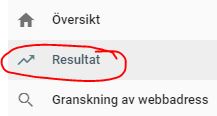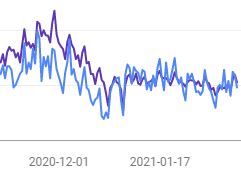
In today’s article, we explain why the number of duplicate images has decreased in Google Image Search, what traffic-related issues this can lead to, and what actions you can take if your site is affected.
If you know that your website has historically driven a significant share of its organic traffic via Google Image Search, it may be interesting to know that Google has relatively recently launched an update that excludes duplicate images from this index.

The reason (as always) is that Google wants to improve the user experience for those searching, by continuing to show the most relevant images possible, while also diversifying the listings presented to a greater extent than before.
If you have experienced a drop in organic traffic from November 2020 onwards, it may be due to this update – something worth investigating further if you suspect it is causing issues.
A quick way to get an overview of the situation is to use the performance report in Google Search Console.

Remember to switch the search type from “Web” to “Image” and set an appropriate date range.

This is what the graph may look like if you’ve been affected by the above issue.

In the graph above, you can clearly see that traffic from image search dropped from the end of November to the end of December and then remained at the lower level. Of course, the decline may also be seasonal, so you should also make comparisons and look for deviations against other steady periods earlier in the year, as well as the same period the previous year.
What should you do if your site is affected?
If your checks show that organic traffic from image search has in fact dropped drastically, our advice is to update your current images on the site by replacing them with completely new ones, thereby ensuring that each one is unique.
Hopefully, this effort will be enough to regain the lost traffic, and who knows… you might even reach new record levels!
(Note! Don’t forget to optimize your images when implementing your new ones – for example, by using descriptive phrases that include the primary keyword you want to rank for in both the image file name and the alt tag.)
